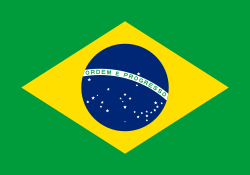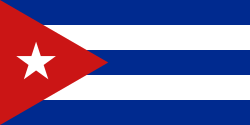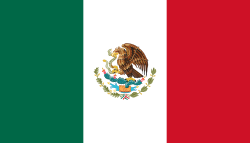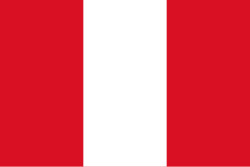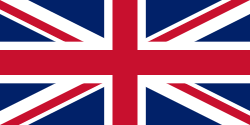Třída Tacoma
| Třída Tacoma | |
|---|---|
 USS Peoria (PF-67) | |
| Obecné informace | |
| Uživatelé | US Navy USCG Argentinské námořnictvo Belgické námořnictvo Brazilské námořnictvo Britské královské námořnictvo Dominikánské námořnictvo Ekvádorské námořnictvo Francouzské námořnictvo Japonské námořní síly sebeobrany Kolumbijské námořnictvo Námořnictvo Korejské republiky Kubánské revoluční námořnictvo Mexické námořnictvo Nizozemské královské námořnictvo Peruánské námořnictvo Sovětské námořnictvo Thajské královské námořnictvo |
| Typ | fregata |
| Lodě | 96 |
| Osud | vyřazeny |
| Předchůdce | třída Asheville |
| Technické údaje | |
| Výtlak | 1509 t (standardní) 2238 t (plný) |
| Délka | 87 m (čára ponoru) 92,6 m (max.) |
| Šířka | 11,4 m |
| Ponor | 3,86 m |
| Pohon | 3 kotle 2 parní stroje s trojnásobnou expanzí 5500 hp |
| Rychlost | 20 uzlů |
| Dosah | 9500 nám. mil při 12 uzlech |
| Posádka | 190 |
| Výzbroj | 3× 76mm kanón (3×1) 4× 40mm kanón (2×2) 9× 20mm kanón (9×1) 1× Hedgehog 8 vrhačů, 2 skluzavky |
Třída Tacoma byla třída protiponorkových fregat námořnictva Spojených států amerických stavěných za druhé světové války. Jednalo se o upravenou verzi kanadských fregat třídy River. Celkem bylo postaveno 96 jednotek této třídy. Část jich byla za války poskytnuta Velké Británii a provozována jako třída Colony. Po válce další získala námořnictva dalších zemí. Dalšími zahraničními uživateli třídy byla Argentina, Belgie, Brazílie, Dominikánská republika, Ekvádor, Francie, Japonsko, Jižní Korea, Kolumbie, Kuba, Mexiko, Nizozemsko, Peru, Sovětský svaz a Thajsko.[1]
Stavba


Nedostatek amerických eskortních plavidel pro službu v Atlantiku za druhé světové války vedl k rozhodnutí vyvinout novou třídu fregat, které by dokázaly stavět civilní loděnice nemající zkušenost se stavbou bojových plavidel. Plavidla vycházela z bojem ověřené kanadské třídy River, jejíž konstrukce byla upravena dle amerických požadavků. Změnila se především výzbroj a další vybavení. Jako prototypy byly Kanadou dodány rozestavěné fregaty HMS Adur a HMCS Anna, dokončené jako fregaty třídy Asheville. Plavidla byla nejprve kategorizována jako dělové čluny (PG – Patrol Gunboats), později se označení změnilo na hlídkové fregaty (PF – Patrol Frigate). Celkem bylo v letech 1943–1945 postaveno 96 jednotek této třídy. Stavba čtyř fregat byla zrušena. Stavbu provedly americké loděnice nacházejícíc se v Kalifornii a v oblasti Velkých jezer. Byly to Kaiser v Richmondu v Kalifornii (12 ks), American Ship Building Company v Lorain (6, další 4 zrušeny) a Clevelandu (7 ks) v Ohiu, Walter Butler v Superior ve Wisconsinu (12 ks), Consolidated Steel v San Pedru v Kalifornii (18 ks), Froemming v Milwaukee (4 ks), Globe Shipbuilding v Superior ve státě Wisconsin (5 ks) a Duluth (3 ks), Letham D. Smith Shipbuilding v Superior ve Wisconsinu (8 ks) a Walsh-Kaiser Company v Providence ma Rhode Islandu (21 ks).[1]
Stavební program fregat a jejich zavádění do služby provázely problémy a zpoždění. Do konce roku 1943 bylo dokončeno pouze 12 fregat. Jako špatné byly hodnoceny manévrovací schopnosti a nedostatečně výkonná ventilace, především však bylo nutné dodatečně vyztužit jejich nedostatečně pevný trup.[1][2]
Konstrukce

Základní výzbroj tvořily tři 76mm kanóny, čtyři 40mm kanóny Bofors, devět 20mm kanónů Oerlikon, jeden salvový vrhač hlubinných pum Hedgehog se zásobou 178 pum, dále osm vrhačů a dvě skluzavky hlubinných pum se zásobou 100 pum. Pohonný systém o výkonu 5500 hp tvořily dva parní stroje s trojnásobnou expanzí (VTE) a dva kotle, pohánějící dva lodní šrouby.[1] Kormidla byla zdvojená.[2] Nejvyšší rychlost dosahovala 20 uzlů. Dosah byl 9500 námořních mil při rychlosti 12 uzlů.[1]
Modifikace
Celkem 44 plavidel bylo za války využívána ke sledování počasí.[2] Plavidla měla hlavňovou výzbroj redukovánu na dva 76mm kanóny, dva 40mm kanóny a čtyři 20mm kanóny. Ušetřený prostor byl využit pro meteorologické balóny. Posádka se zmenšila na 176 mužů.[1][3]
Uživatelé



 Argentina Argentinské námořnictvo – Získala fregaty Sarandi (ex Reading) a Heroína (ex Peoria).[1]
Argentina Argentinské námořnictvo – Získala fregaty Sarandi (ex Reading) a Heroína (ex Peoria).[1]
 Belgie Belgické námořnictvo – Roku 1947 získala fregatu Lieutenant der Zee Victor Billet (ex Sheboygan).[1]
Belgie Belgické námořnictvo – Roku 1947 získala fregatu Lieutenant der Zee Victor Billet (ex Sheboygan).[1]
 Brazílie Brazilské námořnictvo – Získala fregatu Jose Marcelino (ex Huron).[1]
Brazílie Brazilské námořnictvo – Získala fregatu Jose Marcelino (ex Huron).[1]
 Dominikánská republika Dominikánské námořnictvo – Získala fregaty Presidente Peynado (ex Pueblo) a Presidente Troncoso (ex Knoxville).[1]
Dominikánská republika Dominikánské námořnictvo – Získala fregaty Presidente Peynado (ex Pueblo) a Presidente Troncoso (ex Knoxville).[1]
 Ekvádor Ekvádorské námořnictvo – Získala fregatu Guayas (ex Covington).[1]
Ekvádor Ekvádorské námořnictvo – Získala fregatu Guayas (ex Covington).[1]
 Francie Francouzské námořnictvo – Roku 1947 získala fregaty Mermoz (ex Muskegon), Le Verrier (ex Emporia), Le Brix (ex Manitowoc) a La Place (ex Lorain).[1] Roku 1950 byla La Place potopena minou pocházející ze druhé světové války.
Francie Francouzské námořnictvo – Roku 1947 získala fregaty Mermoz (ex Muskegon), Le Verrier (ex Emporia), Le Brix (ex Manitowoc) a La Place (ex Lorain).[1] Roku 1950 byla La Place potopena minou pocházející ze druhé světové války.
 Japonsko Japonské námořní síly sebeobrany – Po válce získalo celkem 18 fregat ze skupiny předtím vrácené SSSR.[1]
Japonsko Japonské námořní síly sebeobrany – Po válce získalo celkem 18 fregat ze skupiny předtím vrácené SSSR.[1]
 Jižní Korea Námořnictvo Korejské republiky – Získalo pět fregat pocházejících ze skupiny předtím vrácené SSSR.[1]
Jižní Korea Námořnictvo Korejské republiky – Získalo pět fregat pocházejících ze skupiny předtím vrácené SSSR.[1]
 Kolumbie Kolumbijské námořnictvo – Roku 1947 získala fregatu Almirante Padilla (ex Groton), roku 1953 posílenou ještě o fregaty Capitan Tono (ex Bisbee) a Almirante Brion (ex Burlington).[1]
Kolumbie Kolumbijské námořnictvo – Roku 1947 získala fregatu Almirante Padilla (ex Groton), roku 1953 posílenou ještě o fregaty Capitan Tono (ex Bisbee) a Almirante Brion (ex Burlington).[1]
 Kuba Kubánské revoluční námořnictvo – V letech 1946–1947 získala fregaty Maximo Gomez (ex Grand Island), Jose Marti (ex Eugene) a Antonio Maceo (ex Peoria).[1]
Kuba Kubánské revoluční námořnictvo – V letech 1946–1947 získala fregaty Maximo Gomez (ex Grand Island), Jose Marti (ex Eugene) a Antonio Maceo (ex Peoria).[1]
 Mexiko Mexické námořnictvo – V letech 1946–1947 získala fregaty Usumacinta (ex Annapolis), General Jose Maria Morelos (ex Bangor), California (ex Hutchinson) a Papaloapan (ex Gladwyne).[1]
Mexiko Mexické námořnictvo – V letech 1946–1947 získala fregaty Usumacinta (ex Annapolis), General Jose Maria Morelos (ex Bangor), California (ex Hutchinson) a Papaloapan (ex Gladwyne).[1]
 Nizozemsko Nizozemské královské námořnictvo – Roku 1947 získalo fregaty Cirrus (ex Abilene) a Cumulus (ex Forsyth).[1]
Nizozemsko Nizozemské královské námořnictvo – Roku 1947 získalo fregaty Cirrus (ex Abilene) a Cumulus (ex Forsyth).[1]
 Peru Peruánské námořnictvo – Roku 1947 získalo fregatu Teniente Galvez (ex Woonsocket).[1]
Peru Peruánské námořnictvo – Roku 1947 získalo fregatu Teniente Galvez (ex Woonsocket).[1]
 Sovětský svaz Sovětské námořnictvo – V letech 1945–1949 provozoval 28 fregat získaných z USA. Jedna ztroskotala a ostatní byly vráceny.[3]
Sovětský svaz Sovětské námořnictvo – V letech 1945–1949 provozoval 28 fregat získaných z USA. Jedna ztroskotala a ostatní byly vráceny.[3]
 Thajsko Thajské královské námořnictvo – Roku 1951 získalo fregaty Tachin (ex Glendale) a Prasae (ex Gallup) pocházející ze skupiny předtím vrácené SSSR.[1]
Thajsko Thajské královské námořnictvo – Roku 1951 získalo fregaty Tachin (ex Glendale) a Prasae (ex Gallup) pocházející ze skupiny předtím vrácené SSSR.[1]
 Spojené království Britské královské námořnictvo – 21 kusů. Označovány jako třída Colony.[1]
Spojené království Britské královské námořnictvo – 21 kusů. Označovány jako třída Colony.[1]
 USA US Navy a USCG – 75 kusů. Posádky amerických fregat tvořili příslušníci pobřežní stráže.[1] Fregaty vstupovaly do služby od konce roku 1943, tedy už v době významného snížení rizika ze strany německých ponorek. Proto byly částečně nasazeny k jiným úkolům (např. meteorologický průzkum) a na jiných bojištích (při službě v Pacifiku se projevila nedostatečná ventilace, navržená pro chladný severní Atlantik).[2]
USA US Navy a USCG – 75 kusů. Posádky amerických fregat tvořili příslušníci pobřežní stráže.[1] Fregaty vstupovaly do služby od konce roku 1943, tedy už v době významného snížení rizika ze strany německých ponorek. Proto byly částečně nasazeny k jiným úkolům (např. meteorologický průzkum) a na jiných bojištích (při službě v Pacifiku se projevila nedostatečná ventilace, navržená pro chladný severní Atlantik).[2]
Odkazy
Reference
- ↑ a b c d e f g h i j k l m n o p q r s t u v TACOMA patrol frigates (1943-1945) [online]. Navypedia.org [cit. 2018-02-17]. Dostupné online. (anglicky)
- ↑ a b c d PF-1 Tacoma [online]. Globalsecurity.org [cit. 2018-02-17]. Dostupné online. (anglicky)
- ↑ a b Tacoma Class Frigates of the United States Navy [online]. Navyhistory.org.au [cit. 2018-02-17]. Dostupné online. (anglicky)
Externí odkazy
 Obrázky, zvuky či videa k tématu třída Tacoma na Wikimedia Commons
Obrázky, zvuky či videa k tématu třída Tacoma na Wikimedia Commons - Patrol Frigate (PF) Index [online]. Navsource.org [cit. 2018-02-17]. Dostupné online. (anglicky)
Média použitá na této stránce
This is the national flag of Belgium, according to the Official Guide to Belgian Protocol. It has a 13:15 aspect ratio, though it is rarely seen in this ratio.
Its colours are defined as Pantone black, Pantone yellow 115, and Pantone red 032; also given as CMYK 0,0,0,100; 0,8.5,79,0; and 0,94,87,0.The flag of the Dominican Republic has a centered white cross that extends to the edges. This emblem is similar to the flag design and shows a bible, a cross of gold and 6 Dominican flags. There are branches of olive and palm around the shield and above on the ribbon is the motto "Dios,Patria!, Libertad" ("God, Country, Freedom") and to amiable freedom. The blue is said to stand for liberty, red for the fire and blood of the independence struggle and the white cross symbolized that God has not forgotten his people. "Republica Dominicana". The Dominican flag was designed by Juan Pablo Duarte, father of the national Independence of Dominican Republic. The first dominican flag was sewn by a young lady named Concepción Bona, who lived across the street of El Baluarte, monument where the patriots gathered to fight for the independence, the night of February 27th, 1844. Concepción Bona was helped by her first cousin María de Jesús Pina.
The flag of the Dominican Republic has a centered white cross that extends to the edges. This emblem is similar to the flag design and shows a bible, a cross of gold and 6 Dominican flags. There are branches of olive and palm around the shield and above on the ribbon is the motto "Dios,Patria!, Libertad" ("God, Country, Freedom") and to amiable freedom. The blue is said to stand for liberty, red for the fire and blood of the independence struggle and the white cross symbolized that God has not forgotten his people. "Republica Dominicana". The Dominican flag was designed by Juan Pablo Duarte, father of the national Independence of Dominican Republic. The first dominican flag was sewn by a young lady named Concepción Bona, who lived across the street of El Baluarte, monument where the patriots gathered to fight for the independence, the night of February 27th, 1844. Concepción Bona was helped by her first cousin María de Jesús Pina.
The national flag of Kingdom of Thailand; there are total of 3 colours:
- Red represents the blood spilt to protect Thailand’s independence and often more simply described as representing the nation.
- White represents the religion of Buddhism, the predominant religion of the nation
- Blue represents the monarchy of the nation, which is recognised as the centre of Thai hearts.
The United States Navy patrol frigate USS Gallup (PF-47) at San Pedro, California. The U.S. Navy Bureau of Ships conceived the camouflage scheme of dull black, ocean gray, light gray, and deck blue, a version of Camouflage Design 16D.
Off Point Judith, Rhode Island. A pattern of Hedgehog depth charges fired by the US Coast Guard-manned frigate USS Moberly explodes underwater. This sank the German submarine U-853. The Moberly operated as a unit of the Atlantic Fleet.
See File:U-853-sinking1.jpg for the circular pattern made by the depth charges striking the water before sinking.
The U.S. Navy patrol frigate USS Peoria (PF-67) off Charleston, South Carolina (USA), following modification as a weather station ship, circa in June 1945.
Photo #: 80-G-427432
Apnok (Republic of Korea Frigate, 1950-1952)
Crewmen load a "Hedgehog" anti-submarine mortar, while on duty in Inchon Harbor, South Korea. Photo is dated 21 December 1950. Apnok, the former USS Rockford (PF-48), had been transferred to the ROK Navy in October 1950. Note striped armbands worn by some of these men.
Official U.S. Navy Photograph, now in the collections of the National Archives.Heroína (P 32) ex-USS Reading (PF 66)
Photo #: NH 97331
Imchin (Korean Frigate, formerly USS Sausalito, PF-4)
Underway, circa 1960.
Official U.S. Navy Photograph, from the collections of the Naval Historical Center.

